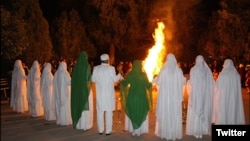The Chairman of Iran's Society of Zoroastrians has said that coronavirus (COVID-19) has impacted the small Zoroastrian community in Yazd very hard with a fatality rate much higher than the general population.
In a tweet on Tuesday Sepanta Niknam who is also a former representative of Zoroastrians in Iran's Parliament said the community accounts for 30 percent of coronavirus deaths in Yazd, one of the two cities with the biggest Zoroastrian communities in Iran. The community is very small and comprises only 2 percent of the population of the city.
Describing the situation as "critical" for his community he said the damage would not have been so sizeable if coronavirus had been detected and the public had been informed sooner. The community held some traditional religious ceremonies before the outbreak was announced, during which the virus appears to have spread among them.
Zoroastrianism is Iran's pre-Islamic religion that once dominated the Persian Empire and beyond.
The first two cases of coronavirus deaths in Qom, the ground zero of the epidemic in Iran, were announced on February 19. Since then according to officials at least 1,135 have died as of March 18 but observers believe the death toll can be much higher.
Radio Farda's investigation based on collection of data from Iranian media has confirmed that the death toll could be as high as 1774. An official of the World Health Organization (WHO) who visited Iran recently has said that the death toll can be potentially five times higher than the official number due to testing being restricted to sever cases.
According to Iran's latest census there were 25,000 Zoroastrians in the country most living in Yazd and Kerman. Along with Christians (Armenian and Assyrian), and Persian Jews they are one of the three religions acknowledged by the Iranian Constitution.





